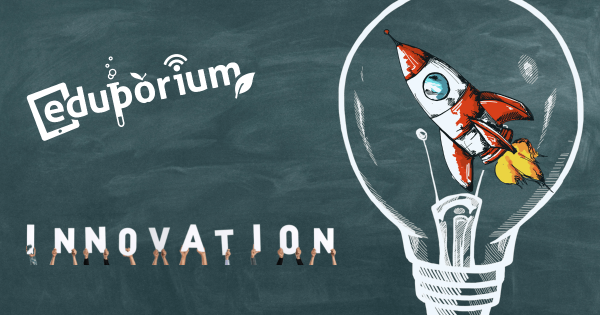Circuitry is all about connecting and closing circuits and the LightUp Edison Kit is the perfect way to teach the basis by combining learning with project-based fun. Using intuitive magnetic attachments, children can experience the fun of building circuits while simultaneously engrossing themselves in a real-life STEM lesson!
EdTech
Educational technology has, of course, completely transformed how today's K-12 students learn. From basic 3D printers and virtual reality systems to simple coding robots and screen-free building tools, countless numbers of educators have been able to affect education for the better and help children develop transferrable skills for the real world. Since EdTech now covers so many areas, however, there often remains a lot for teachers to learn about and explore. Not every technology tool will impact your students in the same ways, nor will they enhance every single lesson. It's more about finding the right solutions for the right situations and building high-quality instruction from there. In this section, we cover everything from specific classroom STEM kits to insights on integrating EdTech tools in teaching. And, we'll continue adding new resources with thoughts on the many branches of the EdTech tree.
EdTech resources are constantly impacting student development and redefining how educators can engage them. Besides those hands-on technologies, digital tools and platforms also play a huge role in learning. From coding or artificial intelligence to social-emotional learning, the instant availability of EdTech resources generates many revolutionary opportunities all throughout the world of K-12 and higher education. When it comes down to it, however, equitable access to technology can be a complete game changer. With these opportunities, students can build the hard and soft skills to navigate our increasingly complex world. And, no matter how complex or simplistic EdTech activities are, they can help catalyze that development. We encourage you to browse the content below and reach out to our team with any questions.
-
The New York City Mayor’s Plan To Better Lives Using EdTech
Mayor de Blasio stated that, in an effort to ensure that every child has the opportunity to develop skills needed not only to succeed in the workforce of the future, but even to enter and succeed within New York City’s rapidly growing technology sector, every school in the city will be required to offer computer science courses to students—regardless of -
Eduporium Weekly | Something to Tech About
Technology is not something tangible you can pick up and put down as you please. It’s not a defined, solid object. And, as the world transitions into a tech-first approach to solving many of its most pressing problems, technology is no longer an option. It’s a tool that can be used to solve these daily problems and students need additional -
Modern Innovation in the Classroom: Blind Texting
Could you type an essay blindfolded? Maybe, but even with all the hours you spend sitting on a swivel chair and punching keys, there’s almost no chance you could get through, say, a two-page paper scot free if you’re not looking at the text. What if you were asked to type the same two-page essay on your mobile phone? Could -
Eduporium Weekly | EdTech—From Supplemental To Essential
For many teachers, using educational technology in the classroom is the norm. For the vast majority of today’s educators, however, it’s a headache-inducing afterthought. The fact is, however, that using technology to teach necessary concepts in a modern fashion has its advantages. The issue isn’t really with what teachers teach, but more with how they teach. -
Eduporium Weekly | Tech for All, All for Tech
There’s so much that goes into a successful EdTech rollout and not all of it comes from the effectiveness of the products. We’ve outlined how to use technology to create the most memorable learning experiences possible and who teachers should connect with in order to become tech teaching experts! Explore that and more in this week’s post. -
Eduporium Weekly | Helping Your Students Help Themselves
In today’s world of education, there are certain skills that all students must learn and certain ways of learning that many classroom educators feel are necessary to accomplish those goals. Though it has often been compared to a spectator sport for much of, well, forever, learning isn’t an experience that is best carried out from the sidelines, especially in today’s -
Eduporium Weekly | How Do Educators Innovate?
Just like us regular people, teachers often make New Year’s resolutions, too. They could be something like spending more time on a particular topic or even taking more time for yourself! We hope you resolve to use more technology in the classroom to engage kids in more meaningful learning but, if that’s not your forte, here other suggestions! -
Eduporium Weekly | Why Schools Need Technology
One way to introduce students to STEM is to make it fun while they learn key skills through active interaction. Digital curricula are a great idea, especially if you can learn from educators who have initiated similar journeys. There are so many projects and fun activities students can do right in the classroom or take home for collaboration outside school. -
Eduporium Weekly | Education And Revolutionized Readiness
So much has been made about the need for kids to learn with technology as early on as elementary school to prepare them for the real world. Many schools and districts, however, continue to rely on their longtime curricula despite evidence that shows innovation in education is highly beneficial for today’s youth.













